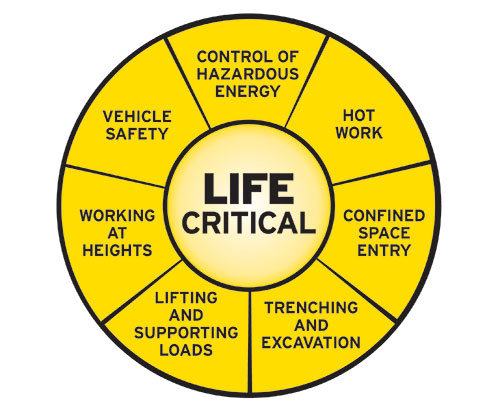The Campbell Institute: Safety starts with hazard recognition

The Campbell Institute at the National Safety Council is the EHS center of excellence. Built on the belief that EHS is at the core of business vitality, the Institute seeks to help organizations, of all sizes and sectors, achieve and sustain excellence. Learn more at the Campbell Institute website.
Every day, workers in the energy industry perform dangerous tasks during which even the slightest mistake could result in significant injury, illness or loss of life.
Consequently, when workers constantly are surrounded by hazards, complacency can develop and they can grow accustomed to potential dangers – becoming less fearful, less cautious and less likely to identify a hazard because it is perceived to be “just part of the job.”
This dichotomy plagues millions of companies worldwide that strive to provide the safest possible environment for their employees. Safety professionals within those companies wrestle with the never-ending challenge of getting employees not only to recognize hazards, but also to reject them as accepted norms of a hazardous profession.
At DTE Energy, one of the ways we addressed this issue was by launching our Life Critical program. Life Critical identifies the seven most hazardous tasks our employees do, and reinforces the need to carefully perform the work and manage risk. The Life Critical tasks we identified are:
- Control of hazardous energy
- Vehicle safety
- Trenching and excavating
- Working at heights
- Confined space entry
- Lifting and supporting loads
- Hot work
Each Life Critical standard has a comprehensive toolkit that enables our employees to identify and navigate hazards. Toolkits include stop cards, which are human performance checklists that empower employees to stop or not begin work they deem unsafe. The cards also feature infographics that provide safety tips and the most crucial operational rules associated with a task.
Employees access our Life Critical standards on our intranet, through job packets provided by their supervisors and via a mobile app. To create awareness of the Life Critical program, we initiated a comprehensive communications program. This included branding the program, which we did by creating an icon. Life Critical is represented as a wheel, with each standard a spoke on the wheel. This symbol is ubiquitous at DTE Energy and is instantly recognizable to all 10,000 of our employees.

When we deployed the Life Critical program, 59 percent of worker fatalities nationwide were related to Life Critical activities. In addition, 100 percent of DTE Energy worker fatalities were related to them.
Since Life Critical’s inception, DTE Energy recorded two consecutive years of record-setting safety performance. Several of our largest power and nuclear plants have recorded 2 million or more man hours without an injury. In addition, our gas utility earned the American Gas Association’s Safety Achievement Award for two consecutive years.
My ultimate goal is zero injuries, and I believe it is on the horizon. Our Life Critical strategy will help get us there. The first step is hazard recognition. The second step is arming employees with tools to manage those hazards.
This article represents the views of the author and should not be construed as a National Safety Council endorsement.
 Lynette Dowler is the director of corporate safety at DTE Energy – a Detroit-based diversified energy company involved in the development and management of energy-related businesses and services nationwide. Its operating units include an electric utility serving 2.2 million customers in southeastern Michigan and a natural gas utility serving 1.3 million customers in Michigan..
Lynette Dowler is the director of corporate safety at DTE Energy – a Detroit-based diversified energy company involved in the development and management of energy-related businesses and services nationwide. Its operating units include an electric utility serving 2.2 million customers in southeastern Michigan and a natural gas utility serving 1.3 million customers in Michigan..
Direct to your inbox: Sign up to be notified in email about new Campbell Institute columns.
Post a comment to this article
Safety+Health welcomes comments that promote respectful dialogue. Please stay on topic. Comments that contain personal attacks, profanity or abusive language – or those aggressively promoting products or services – will be removed. We reserve the right to determine which comments violate our comment policy. (Anonymous comments are welcome; merely skip the “name” field in the comment box. An email address is required but will not be included with your comment.)

